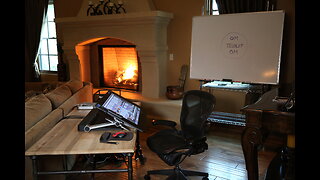NURSE EDITH CAVELL (1939) Anna Neagle, Edna May Oliver, George Sanders | Biography, Drama, War | B&W
Nurse Edith Cavell is a 1939 American film directed by British director Herbert Wilcox about Edith Cavell. The film was nominated at the 1939 Oscars for Best Original Score.
SYNOPSIS
An English nurse with a great reputation for her work in Belgian hospitals, becomes outraged at the number of Allied soldiers detained in German prisoner-of-war camps during World War I, and devises a secret plan to help hundreds escape.
The story follows the broadly true story of Edith Cavell who went to German-occupied Brussels after the onset of the First World War.
Edith hides the young Frenchman Jean Rappard, but is suspected of this and her hospital is inspected by German troops at regular intervals. Jean is put on a canal barge and despite being searched at the border escapes successfully.
Back in Brussels a firing squad executes a dozen escaped prisoners who were caught in the woods. Edith and Albert go to try to find wounded on a battlefield near the woods and bring back four British men including Pte Bungey of the Buffs. They are hidden in the hospital in a secret room accessed through a wardrobe in the basement boiler room. The Countess goes to the cobbler to organise their safe transportation.
Meanwhile Edith also tends the young dying Germans in the main hospital. A further three Frenchmen are sent to the border by barge with Mme Moulin.
An alleged escaped French PoW arrives at the Countess's mansion. The Countess is suspicious due to his accent and locks him in the kitchen whilst informing the German authorities. The hospital is also being watched. Nevertheless the numbers increase ... but they include Wilhelm Schultz of the German military intelligence. He therefore works out how Edith and the Countess operate. Esch person is given new ID papers and money.
On 5 August 1915 Edith is arrested and placed in the Prison of St Gilles. A campaign begins to release her, but the Germans wish to "set an example" and wish her shot.
In the court she is charged with the far more serious crime of espionage. The very young Francois Rappard is brought into the court (in handcuffs) as the critical non-military witness. The authorities point out that the people who were helped returned to the front and killed Germans. Edith admits to having had helped at least 200 men escape. The three military judges go to decide her sentence. She is read the sentence in her cell by Cpt. Heinrichs: she is to be shot at dawn.
CAST & CREW
Anna Neagle as Nurse Edith Cavell
Edna May Oliver as Countess de Mavon
George Sanders as Capt. Heinrichs
May Robson as Mme. Rappard
ZaSu Pitts as Mme. Moulin
H. B. Warner as Hugh Gibson the British consul
Sophie Stewart as Sister Williams
Mary Howard as Nurse O'Brien
Robert Coote as Private Bungey
Martin Kosleck as Pierre
Gui Ignon as Cobbler
Lionel Royce as Gen. von Ehrhardt
Jimmy Butler as Jean Rappard
Rex Downing as François Rappard
Henry Brandon as Lt. Schultz
Fritz Leiber as Edith's defence lawyer
Ernst Deutsch as the Chief Prosecutor
Halliwell Hobbes as the pastor who gives the last rites
Directed by Herbert Wilcox
Screenplay by Michael Hogan
Based on Dawn 1928 novel by Reginald Berkeley
Produced by Herbert Wilcox, Cinematography F. A. Young, Joseph H. August
Edited by Elmo Williams
Music by Anthony Collins
Production company Imperadio Pictures
Distributed by RKO Radio Pictures
Release dates September 22, 1939 (Premiere-New York City), September 29, 1939 (US)
Running time 98 minutes
Country United States
Language English
Budget $508,000
Box office $1,082,000
NOTES
The film made a profit of $38,000. Modern Screen gave the film 4 out of 4 stars, stating that the film was "a powerful message against war and hatred", and that it maintained its level of suspense throughout the course of the picture. They praised the acting, particularly that of Anna Neagle in the title role, as well as May Robson, Edna May Oliver, and ZaSu Pitts, in their roles of women who aid the fleeing soldiers. The performance of Rex Downing was called "notable", and that of Lionel Royce was described as "stand-out". Also commended were George Sanders, Mary Howard, Sophie Stewart and H.B. Warner. The magazine was especially enthusiastic of Herbert Wilcox's direction, in that he managed to make every part credible, and even the roles of the "heavies" managed to be shown with compassion and understanding.
-
 19:36
19:36
Lost n Found Films
19 days agoBEAR SHOOTERS (1930) Norman 'Chubby' Chaney, Jackie Cooper & Mary Ann Jackson | Comedy, Family | COLORIZED
87 -
![[D2] Onslaught Grind w/ Some PvP before Final Shape](https://hugh.cdn.rumble.cloud/s/fw/s8/1/5/g/l/6/5gl6r.0kob-small-D2-Onslaught-Grind-w-Some-P.jpg) LIVE
LIVE
CHiLi XDD
6 hours ago[D2] Onslaught Grind w/ Some PvP before Final Shape
770 watching -
 2:45
2:45
Chicks in the Office
4 hours agoHolly Madison Talks Reconciliation with Kendra Wilkinson
16.1K24 -
 LIVE
LIVE
Di bear
6 hours agoFinal Season Mission, Pantheon | Destiny 2
814 watching -
 6:54:43
6:54:43
SquallRush
8 hours agoAthenian Rhapsody!
26K6 -
 1:47:01
1:47:01
Real Coffee With Scott Adams
6 hours agoEpisode 2492 CWSA 06/01/24
33.7K34 -
 2:08:10
2:08:10
LFA TV
7 hours agoEP 47: Miles Guo Trial Special with Special Guests - Truth, Betrayal, and Fox Hunt | WHISTLE BLOWERS 6.01.24 12pm EST
26.1K12 -
 1:13:59
1:13:59
Tactical Advisor
5 hours agoVault Room Tour/Unboxing- Vault Room Live Stream
26.8K2 -
 1:11:28
1:11:28
The Squad
11 hours agoArsenal's Huge Summer🚨Olise to Man Utd DEAL✅ Osimhen to Arsenal or Chelsea☑️ UCL Final Preview
39K7 -
 56:23
56:23
Trumpet Daily
1 day ago $1.10 earnedCohen Is Free to Lie and Steal, but Trump Is Guilty of Something - Trumpet Daily | May 31, 2024
31.1K53